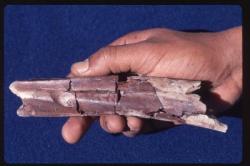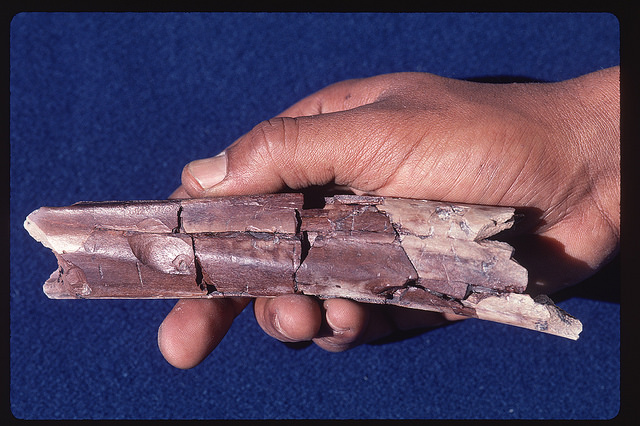
PROCEEDINGS OF THE NATIONAL ACADEMY OF SCIENCES—A study* suggests that marks on ancient fossilized bones thought to have been inflicted by hominid butchers may instead be the result of animal biting and trampling. Traces and pits found on the surfaces of fossilized bones have been previously used to infer the use of stone tools by hominids for butchering carcasses. However, whether the observed marks represent butchery using stone tools or trampling and biting by carnivores remains unsettled, calling into question the inferred ages of hominid stone tool use. Tim D. White and colleagues analyzed mammal bones from the Plio-Pleistocene fossil record in Ethiopia’s Middle Awash site that were dated to around 4.2 million years ago, 3.4 million years ago, and 2.5 million years ago. Combined with contextual evidence, analysis of cuts, marks, grooves, and pits on dozens of fossil bones, which included a pair of Australopithecus humeral shafts and an equid femur recovered from water-deposited sands, suggested that several of the marks were likely the result of crocodile bites rather than stone tool use. Further, analysis of a bovid tibial midshaft specimen and a bovid mandible proved inconclusive, leaving open the possibility of one or both agents. Given that previous interpretations of hominid subsistence and tool use were based on the analysis of relatively small fossil assemblages from such sites as Tanzania’s Olduvai Gorge and Ethiopia’s Hadar village, where the Australopithecine fossil Lucy was discovered, the findings suggest the need for reassessment of assemblages used to infer early hominid behavior, according to the authors.
_____________________________
Linear marks and pits on a 2.5 million-year-old ungulate leg bone from Bouri, Ethiopia. Credit: PNAS
_____________________________
Article Source: PNAS news release
_______________________________________
*”Hominid butchers and biting crocodiles in the African Plio-Pleistocene,” by Yonatan Sahle, Sireen El Zaatari, and Tim D. White.
_______________________________________
Receive 30 days free access to the popular new CuriosityStream lineup of documentaries on science, history, nature, and technology as a new Popular Archaeology premium subscriber.
___________________________________________
Travel and learn with Far Horizons.
____________________________________________





